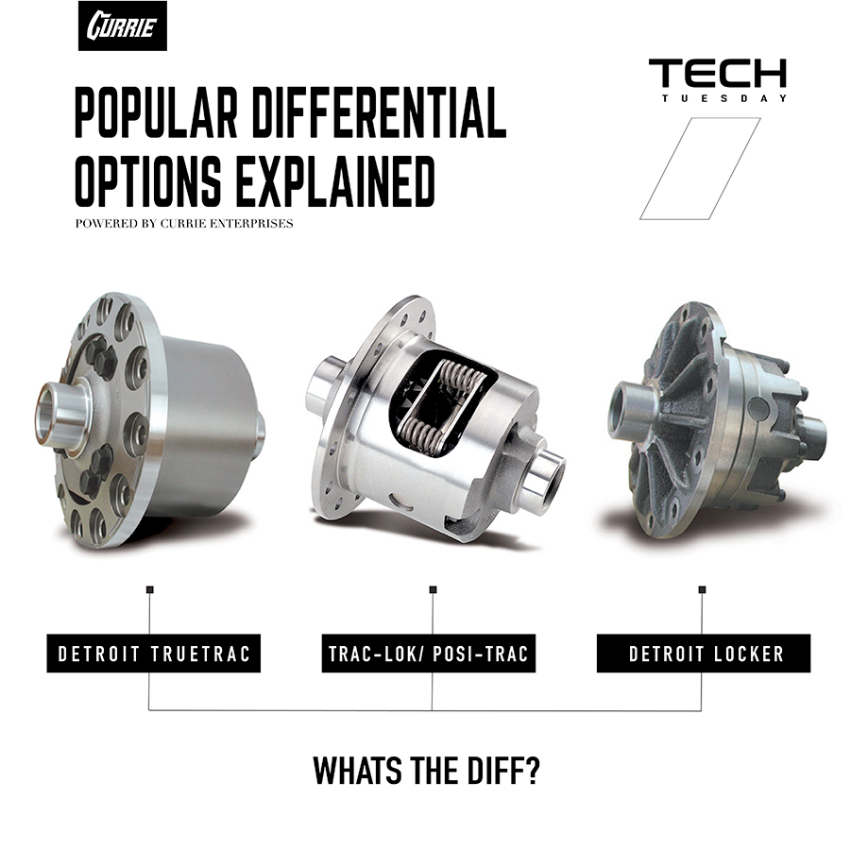Selecting the right differential for your rearend build is an important decision that will be with you for a very long time - if you get it right.
Below are short, not-too-technical, overviews of some of the most frequently asked about differential options for Hot Rods, Muscle Cars, and Muscle Trucks.


Detroit Truetrac - Helical-gear limited-slip (worm differential) is the modern replacement for the classic clutch-type posi. Under normal light throttle driving conditions, a Truetrac operates much like a standard open differential, allowing the rear wheels to rotate at slightly different speeds for smooth cornering. However, when accelerating (torque applied), the six helical-gears inside the unit smoothly and quietly engage, applying torque to both rear wheels equally, maximizing traction (think two equal length black stripes). Unlike a traditional clutch-type posi, a Truetrac requires no special oil additive or maintenance. With silky-smooth positive operation and no components to wear out, the Truetrac maintains day-one performance for the life of the unit.


Trac-Lok/Posi-Trac – Clutch-type limited-slip (Posi), offered as original equipment in many GM and Ford performance cars, these units rely on clutches (friction plates) to transfer power to the wheels. In operation, the clutches slip just enough to allow for smooth cornering while engaging with more force as power (torque) is applied, driving both wheels equally. When used in a daily driver, these units function well; however, as the miles add up or with aggressive driving or track use, the clutches and other internal components will become worn and severely degrade performance. Luckily, rebuild kits are widely available so that these units can be restored to like-new performance. Additionally, if the vehicle sits for extended periods, the clutch plates can stick together, causing the unit to chatter and clunk until gear oil works its way in between the clutch plates. A friction modifier must be added to the gear oil to help prevent the clutches from moaning or chattering during normal driving.


Detroit Locker - Automatic "ratcheting-style" differential is known for its reliability, rugged construction, and fully-locked performance on any surface. When power (torque) is applied in either forward or reverse directions, the unit locks both axles together like a spool. When coasting or rolling through a corner (no torque applied), the unequal speed of the inside and outside wheels causes the unit to unlock momentarily, before abruptly locking when power is applied. At the heart of the locker are two, spring-loaded forged steel side plates (one per axle) with large square-edged teeth that engage and disengage a matching center spider block. The interaction of the side plates and spider block teeth creates the signature ratcheting sound of the unit. The Detroit Locker is best suited for off-road or severe track use where maximum traction is required, and quiet/smooth operation is less important.

